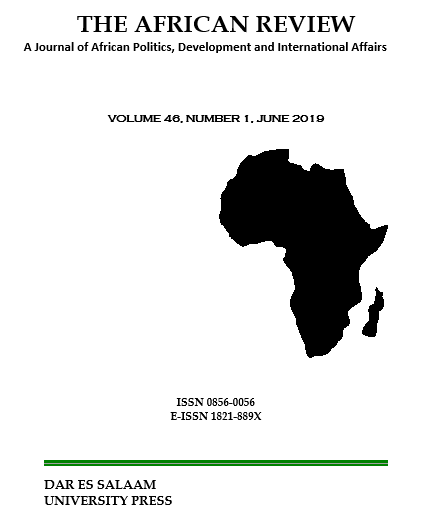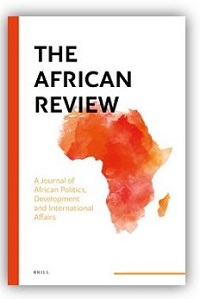"I don ' t have a community"
Abstract
Abstract Ethnic fabric of the Tanzanian society is a product of several internal and external factors; migration and colonialism being two of the most impactful milestones. Providing for a significant transnational movement of people and cultures; migration and colonialism have played a key role in shaping the inter-ethnic relations in Tanzania. This paper addresses how present day youth reiterate historically rooted expressions of ethnicity; dynamics of boundary drawings; and processes of negotiating ethnic differences. By focusing on the South Asian communities in Tanzania, I argue that, community centres provide a basis for reinstating ethnic boundaries between African and non-African youth in Tanzania.
Keywords: Ethnicity, Boundaries, South-Asian Community, Pluralism
Fatima Bapumia, Lecturer, University of Dar es Salaam; Email: scentsandspices@gmail.com
References
Aminzade, R. 2013. The Dialectic of Nation Building in Postcolonial Tanzania. The Sociological Quarterly, 54(3): 335 €“366.
Bapumia, F. 2012. Rationalizing violence Domesticizing Abuse: South Asian Experience in Tanzania (1. Aufl.). Saarbrücken: LAP Lambert Academic Publishing.
Barth, F. 1994. Enduring and Emerging issues in the analysis of ethnicity. In H. Vermeulen and C. Govers (Eds.), The anthropology of ethnicity: Beyond "Ethnic groups and boundaries" (pp. 11 €“32). Amsterdam, Hague, Netherlands: Spinhuis; Distribution outside The Netherlands, M. Nijhoff International.
Baumann, G. 1996. Contesting culture: Discourses of identity in multi-ethnic London. Cambridge, New York: Cambridge University Press.
Bharati, A. 1972. The Asians in East Africa: Jayhind and Uhuru. Professional-Technical Series. Chicago: Nelson-Hall.
Brennan, J. R., Burton, A., and Lawi, Y. Q. 2007. Dar es Salaam: Histories from an emerging African metropolis. Dar es Salaam, East Lansing, MI, USA: Mkuki na Nyota Publishers, in association with the Britsih Institute in Eastern Africa, Nairobi; Distributed in North America by Michigan State University Press.
Gray, H. 2013. Industrial policy and the political settlement in Tanzania: aspects of continuity and change since independence. Review of African Political Economy, 40(136): 185 €“201.
Heilman, B. 1998. Who are the Indigenous Tanzanians? Competing conceptions of Tanzanian citizenship in the business community. Africa Today, 45(3/4): 369 €“387.
Iliffe, J. 1979. A modern history of Tanganyika: Cambridge University Press.
Kaiser, P. J. 1996. Structural Adjustment and the Fragile Nation: the Demise of Social Unity in Tanzania. The Journal of Modern African Studies, 34(2): 227.
Liviga, A. J. 2009. Tanzania: A Bumpy Road to Consolidated Democracy. Eastern Africa Social Science Research Review, 25(1): 1 €“42.
Morris, S. 1956. Indians in East Africa: a study in a plural society. The British Journal of Sociology, 7(3): 194 €“211.
Nagar, R. 1997. The making of Hindu communal organizations, places, and identities in postcolonial Dar es Salaam. Environment and Planning D, 15: 707 €“730.
Strauss, A. L. 1987. Qualitative analysis for social scientists. Cambridge [Cambridgeshire], New York: Cambridge University Press.
Downloads
Published
Issue
Section
License
Copyright © by Department of Political Science and Public Administration, University of Dar es Salaam
All rights reserved. No part of this publication may be reproduced or transmitted in any form or by any means, electronic or mechanical, including photocopying, recording, or any information storage or retrieval system, without permission in writing from the publisher, except for short extracts in fair dealing, for research or private study, critical scholarly review or discourse with an acknowledgement.
The African Review: A Journal of African Politics, Development and International Affairs [ISSN 0856-0056 (Print) & ISSN 1821-889X (Online)] is published bi-annually, June and December by the Department of Political Science and Public Administration, University of Dar es Salaam, P.O. Box 35042 €“ Dar es Salaam €“ Tanzania



